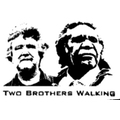Moonlight Screening

I stopped at Bon Bon rest stop to through out the swag for the night under a super bright moon, a crystal clear sky and freezing temperatures.
I arrived at Fregon the following afternoon and it wasn’t too long before Murray sent the young fella to take me up to the camping grounds. There was a change of plans and we were going to use the Community centre after all. So I set up the projector,screen and PA plugged everything in at the pylon and went to collect a few people who hadn’t turned up yet. When I got back the pace was abuzz, much of the kuka and wipu had been cooked and consumed and it was show time.
I am always amazed at how differently Anangu and Piranpa (whitefella) audiences react to the film, or not so much the film but which parts they react to. There is immeasurable pride for Anangu when we see the inma, particular the opening where we see the magnificent black kalaya (emu), while the reaction for piranpa is amazement. The irony of the statue of Cpt Cook in an astonishingly Nazi salute is not lost on whitfellas, whereas for Anangu is not so much a person as a Myth or a story of mythic proportions. Cook is to the Australian context what the Raj is to India. The shot of abundant wild tomatoes alway bring a roar form Anangu audience whereas piranpa are left wondering “what was that?” People left got out of the cold pretty quickly after the film finishd and we built up the camp fire.
So that part of the story is delivered, a few final touched on the DVD and our marketing efforts will be on promoting that.
Next morning we had a stream of visitors, in between collecting firewood, fetching water and vehicle repairs.
The conversations follow consistent pathways, they are always to do with country, how this country has been under Anangu custodianship since time out of mind, how Tjukurpa is standing up alive and how that is the way the world here on the APY Lands is. The government, and people outside may have their own ideas about this country but “We are here today (on this country)” and that’s the way it is. There is no need for anyone here for Anangu to lay a claim to the country for their “ownership” is axiomatic, self evident and cannot be otherwise. There is always a great sense of both pride and gratitude that these people are here on their country, that is the ultimate.
Over the next few day I went out with Murray to see Tjukurpa, “We re going to see Hawthorne,” he said. The story is of a Hawk that flew in from outside. You have to go back, they said, this is not your country. Before leaving though the hawk laid an egg in a nest, and it is there today like a huge fossilised egg and nest. Also there way something of a mystery solved. I had long wondered about the cutting edge attached to the handle of a miru (spear thrower). It is usually embedded in a large knob of kiti or resin. Well here lying scattered all around were kanti (cutting stones) of many shapes sized and colours. Find one you like and you can use that. I had never seen any evidence of knapping. I hadn’t occurred to me that there would be plenty of kanti just lying around. You can touch them up if you like, Murray said, but it seed mor likely that people would use them as disposables.
We also collected mulga for making digging sticks. Murray showed me how to make a good strong point on a wana for digging tjala and maku. (Honey andy and whitchity grubs) I tell you the finished tied is like a crowbar. I was amused at how animated Anangu became when they saw it. Maybe there is a feed of tjala coming. We also found some of last seasons wanganu seed still standing. That was another bit of research that is important for our next film, where the women want to make a particular type of prised mai, but I mustn’t spill the beans.
And finally we spent the good part of a day look ing for blank from the spear trees. I had seen spears being made before, out of a mulga root, hard and slow work. This is altogether a different item, much quicker to work and make, coming up light springy and lethal.
We have long been looking for ways of using cultural knowledge and skill for enterprise. It has been going for a long time on a fairly small scale. We believe that a good number of the challenges that people living on the lands face can be addressed by various forms of social enterprise and like painting, artefact making, singing dancing and performance is part of that, and that is where much of our current effort is focused.
I am back in Adelaide now, thinking on all the new things I learnt and experience in this quick trip into a Mythic landscape.
blog comments powered by Disqus
